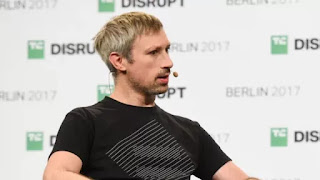What's Web 3 and how will it transfigure the Internet
 |
In moment's world where everything is connected, it's delicate to imagine why experts are talking about the need for a complete change in the Internet.
But it's the connectivity of everything that has impelled numerous technicians to consider what they call the new phase of the Internet.
They contend that what we use is still the alternate generation of the Internet and should be changed for the better.
According to him, we need further'semantic web'which is more effective and gives us further control over our data.
With the arrival of Web3.0, they're prognosticating it.
Numerous in the assiduity consider this to be the coming' Great Internet Revolution'.
Web3.0 will enable machines to tone- interpret big data.
This will enable us, among other effects, to interact more deeply with other druggies from any platform.
In this' new chapter'of the Internet we will no longer need complex operating systems or large hard drives to store information, because everything will be in the pall and everything will be veritably presto and changeable.
In general terms, it can be said that machines on Web3.0 will' unite'with humans more effectively.
 |
But its main advantage is the decentralization of the Internet, that is, the creation of an Internet that's further indifferent and decentralized, and undermines large Internet companies, as lawyers of this conception contend.
Silicon Valley is formerly in its immaturity and has been under construction for numerous times.
The term was chased in 2014 by Gavin Wood,co-founder of Ethereum Cryptocurrency.
Just as Tim Berners-Lee is considered the" father of the Internet, Wood is frequently appertained to as the father of Ethereum"because of hisco-founders and broadcasters.
Ethereum is the alternate most habituated blockchain protocol in the world. And this technology is the base of Web3.0.
Wood, the creator of the open source designPolka.
com, began his work with the idea that it was necessary to reshape the Internet and produce a new structure with a specific protocol that would polarize the Internet.
Wood is a British software mastermind. To this end, he innovated the Web3.0 Foundation to fund these exploration and development brigades, laying the.
foundations for Web3.0 and erecting a decentralized web- grounded blockchain structure company in Berlin, Parity Technologies.
But what does decentralized Internet mean?
The Internet was firstly a common and decentralized protocol, says ArsalaO'Keefton, director of dispatches at Parity Technologies.
It started to come more decentralized in the90's with these big technologies.
With Web3.0, we want to get the Internet back on track, he said.
What the Internet did was that no bone had enough control over the communication tools that we've moment.
If Web1.0 ( Web 1) was grounded on hyperlinks and Web2.0 ( Web 2) does so on social networks; Web3.0 will be grounded on blockchain technology.
We've to suppose with an open mind because blockchain is further than just a loose currency, he said. Web3.0 is more intriguing than the price of a commemorative.
In fact, the rudiments that make Web3.0 possible have evolved over the last many times and in a way have come a reality.
A briskly, safer and more open web
Colin Irwin has been developing Web3.0 for five times. He explains that the train runs under Coin and IPFS systems. Both protocols have been developed by a company called Protocol Labs, a blockchain technology company grounded in San Francisco, California, which also aims to polarize the web.
My job is to speed up the transition from Web2.0 to Web3.0.
Our thing is to modernize the web to make it briskly, more secure, stronger and more open against attacks.
To understand how Web3.0 will work and how fast and flexible it'll be, we must first understand how the Internet was created and how it has changed over the times.
It simply came to our notice also.
Avery says Web1.0 was launched in the early 1990's.
Websites like Yahoo were stationary web runners that reckoned on hyperlinks.
Web2.0 came in the 2000's.
The crucial enhancement, says Avery, is that it allows us to read and write interactively, so that mobile and web operations can talk to each other and we can communicate with them.
The development of Web3.0 boosts consumer confidence as civil liberties will be integrated into its structure.
He also criticizes the'centralization'of Web2.0.
Some pall storehouse service providers, banks and big governments, gather all the power and can control and manipulate the data as they wish to make plutocrat and advance their own interests, says Avery.
We can not trust that these living realities aren't manipulating our data.
 |
Also what changes with Web3.0?
It'll change the whole structure of the web, says Avery.
Experts say that Web3.0 will allow druggies to pierce thousands of data centers around the world and will be suitable to choose who keeps their data and how.
Amazon, Google and Microsoft are presently leading the request for pall data storehouse.
Amazon, together with its attachment Amazon Web Services (AWS), controls41.5 of this request. It's followed by Microsoft at29.4 and Google at 3.
The three companies enjoy half of the world's 600 largest data centers, according to the Synergy Report Group.
Evern, on the other hand, explains that Web3.0 will have a clear medium for barring issues similar as data authentication and fake news.
This is peer-to- peer (P2P) technology that allows multiple druggies to change peer-to- peer coffers directly between druggies, which isn't possible with being Web2.0 or HTTP protocols, according to Evern.
Arsala explains that Web3.0's blockchain technology is veritably secure and that no bone has been suitable to hack for further than 10 times now.
The issue of security is veritably important in the age we're living in because our lives and our data are fleetly changing on the Internet.


